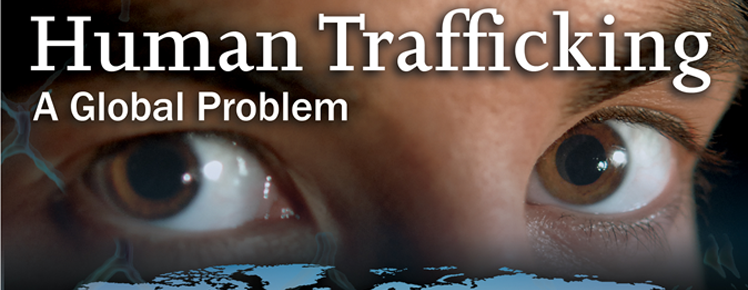Questions to Consider About Human Trafficking
- How widespread is human trafficking?
- Which countries are affected by human trafficking?
- What is the most commonly identified form of trafficking?
- Who are the victims and culprits of human trafficking?
- What types of industries are involve with human trafficking?
- What are the major challenges faced in the battle against human trafficking?
- Do many traffickers get caught and convicted?
- What can I do to help fight human trafficking?

What is Human Trafficking? (Background)
Article 3, paragraph (a) of the Protocol to Prevent, Suppress and Punish Trafficking in Persons defines Trafficking in Persons as the recruitment, transportation, transfer, harbouring or receipt of persons, by means of the threat or use of force or other forms of coercion, of abduction, of fraud, of deception, of the abuse of power or of a position of vulnerability or of the giving or receiving of payments or benefits to achieve the consent of a person having control over another person, for the purpose of exploitation. Exploitation shall include, at a minimum, the exploitation of the prostitution of others or other forms of sexual exploitation, forced labour or services, slavery or practices similar to slavery, servitude or the removal of organs
Elements Of Human Trafficking
On the basis of the definition given in the Trafficking in Persons Protocol, it is evident that trafficking in persons has three constituent elements;
The Act (What is done)
Recruitment, transportation, transfer, harbouring or receipt of persons
The Means (How it is done)
Threat or use of force, coercion, abduction, fraud, deception, abuse of power or vulnerability, or giving payments or benefits to a person in control of the victim
The Purpose (Why it is done)
For the purpose of exploitation, which includes exploiting the prostitution of others, sexual exploitation, forced labour, slavery or similar practices and the removal of organs.
To ascertain whether a particular circumstance constitutes trafficking in persons, consider the definition of trafficking in the Trafficking in Persons Protocol and the constituent elements of the offense, as defined by relevant domestic legislation.
Articles Given to You in Class - MINKUS
These articles are two sources that can be used in your paper.
- Right under our noses: Human trafficking in the United StatesNewspaper article
- Human TraffickingDatabase article
Articles from Databases and Websites
These are links to pre-selected articles that can be used in your paper.
- Human TraffickingSIRS Issues Researcher - Topic Page
- Sex Trafficking StatisticsThe Polaris Project (Website Source)
- Human TraffickingThe Polaris Project (Website Source)
- Human TraffickingGlobal Issues in Context Topic Page (Database Sources)
- What is Human Trafficking?Department of Homeland Security (Website source)
Databases to Use
Use the databases to find your own sources.
- Gale Global Issues in Context This link opens in a new windowInternational viewpoints on a broad spectrum of global issues, topics and current events
- SIRS Issues Researcher This link opens in a new windowOffers only the very best article selections from more than 2,000 international sources. Analysis and opinions cover the pros, cons, and everything in between of 345+ social, scientific, health, historic, economic, political, and global issues.
World News Organizations
Search on the reliable news links for articles you find on your own.